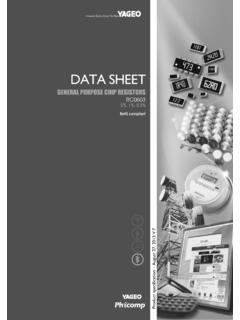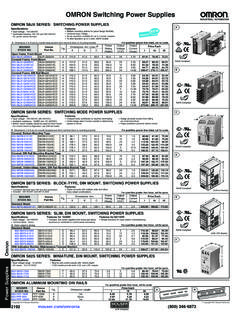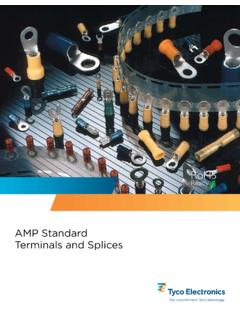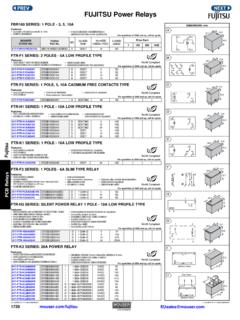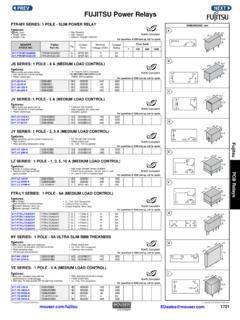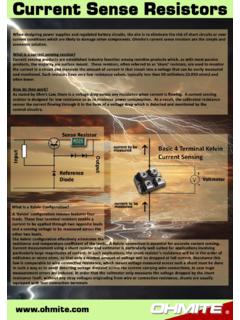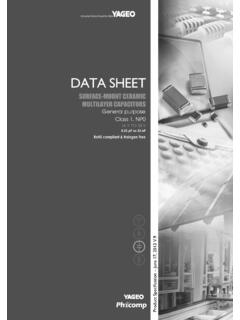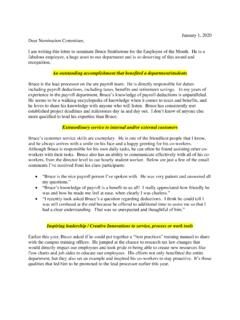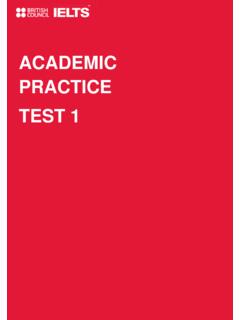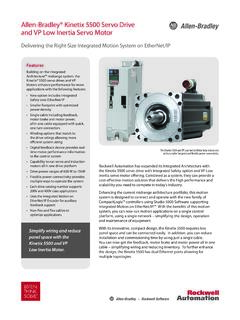Transcription of Design Guide for Off-line Fixed Frequency DCM Flyback …
1 Design Note DN 2013-01 january 2013 Design Guide for Off-line Fixed Frequency DCM Flyback Converter Allan A. Saliva Infineon Technologies North America (IFNA) Corp. DCM Flyback 2 Design Note DN 2013-01 january 2013 Edition 2013-01 Published by Infineon Technologies North America 27703 Emperor Blvd, suite 310, Durham, NC 27703 Infineon Technologies North America Corp. 2013 All Rights Reserved. Attention please! THE INFORMATION GIVEN IN THIS APPLICATION NOTE IS GIVEN AS A HINT FOR THE IMPLEMEN-TATION OF THE INFINEON TECHNOLOGIES COMPONENT ONLY AND SHALL NOT BE REGARDED AS ANY DESCRIPTION OR WARRANTY OF A CERTAIN FUNCTIONALITY, CONDITION OR QUALITY OF THE INFINEON TECHNOLOGIES COMPONENT. THE RECIPIENT OF THIS APPLICATION NOTE MUST VERIFY ANY FUNCTION DESCRIBED HEREIN IN THE REAL APPLICATION.
2 INFINEON TECHNOLOGIES HEREBY DISCLAIMS ANY AND ALL WARRANTIES AND LIABILITIES OF ANY KIND (INCLUDING WITHOUT LIMITATION WARRANTIES OF NON-INFRINGEMENT OF INTELLECTUAL PROPERTY RIGHTS OF ANY THIRD PARTY) WITH RESPECT TO ANY AND ALL INFORMATION GIVEN IN THIS APPLICATION NOTE. Information For further information on technology, delivery terms and conditions and prices please contact your nearest Infineon Technologies Office ( ). Warnings Due to technical requirements components may contain dangerous substances. For information on the types in question please contact your nearest Infineon Technologies Office. Infineon Technologies Components may only be used in life-support devices or systems with the express written approval of Infineon Technologies, if a failure of such components can reasonably be expected to cause the failure of that life-support device or system, or to affect the safety or effectiveness of that device or system.
3 Life support devices or systems are intended to be implanted in the human body, or to support and/or maintain and sustain and/or protect human life. If they fail, it is reasonable to assume that the health of the user or other persons may be endangered. DN 2013-01 Subjects: Fixed Frequency DCM Flyback Author: Allan A. Saliva (IFNA PMM SMD AMR PMD 2) We Listen to Your Comments Any information within this document that you feel is wrong, unclear or missing at all? Your feedback will help us to continuously improve the quality of this document. Please send your proposal (including a reference to this document) to: DCM Flyback 3 Design Note DN 2013-01 january 2013 Table of contents I. Introduction .. 4 II. Fixes Frequency Flyback Modes of Operation: DCM vs CCM.
4 4 III. DCM Flyback Design Equations and Sequential Decision Requirements .. 6 IV. DCM Flyback Design Example .. 12 V. References .. 16 DCM Flyback 4 Design Note DN 2013-01 january 2013 I. Introduction Flyback is the most widely used SMPS topology for low power application from 100W down to under 1W, whenever the output needs to be isolated from the input. Its best features are low system cost, simplicity, and relative ease of implementation. For low current output and power levels below 50W, DCM Flyback is the usually the preferred operating mode, due to it s simpler control loop implementation and lower turn on loss. The objective of this paper is to develop a comprehensive, practical and easy to follow approach in designing an off line DCM Flyback power supply.
5 This includes component selection Guide , Design knowledge and practical tips for a fast and well optimized Design . II. Fixes Frequency Flyback Modes of Operation: DCM vs CCM Figure 1 shows the basic circuit diagram of a Flyback converter. Its main parts are the transformer, the primary switching MOSFET Q1, secondary rectifier D1, output capacitor C1 and the PWM controller IC. Depending on the Design of T1, the Flyback can operate either in CCM (Continuous Conduction Mode) or DCM (Discontinuous Conduction Mode). In DCM, all the energy stored in the core is delivered to the secondary during the turn off phase ( Flyback period), and the primary current falls back to zero before the Q1 switch turns on again.
6 For CCM, the energy stored in the transformer is not completely transferred to the secondary; that is, the Flyback current (ILPK and ISEC) does not reach zero before the next switching cycle. Figure 2 shows the difference between DCM and DCM mode in terms of Flyback primary and secondary current waveforms. Table 1 highlights the main points of advantage for either DCM or CCM mode operation. DCM operation requires a higher peak currents to deliver the required output power compared to CCM operation. This translates to a higher RMS current rating on the primary MOSFET and ouput capacitor, and greater conduction losses in the transformer windings. When these higher peak and RMS current limits the fulfillment of Design requirements, ( larger output capacitor required or very high conduction loss on the MOSFET and transformer), switching to CCM mode is advised.
7 This condition usually occurs for designs wherein the output voltage is low and output current is relatively high (> 6A), typically for output power over 50W, though for 5V or lower outputs this is a problem at power below 50W. Table 1: DCM vs CCM Figure 2: CCM and DCM Flyback Current Waveforms Figure 1: Flyback Schematic DCM Flyback 5 Design Note DN 2013-01 january 2013 Figure 2B shows the relationship between trapezoidal and triangular current waveforms on the primary side of the Flyback . IA is the nominal starting point of the waveform, which will be zero for a triangular waveform and some higher value determined by the current still flowing in the primary winding during CCM operation when the switch turns back on.
8 IB is the end point for the current level during the Ton interval. The IRMS normalized current value as a function of the K factor (IA/IB) is shown on the Y axis; this is the multiplier that should be used for estimating resistive losses for different wave shapes in comparison to a flat top trapezoidal waveform, and highlights the additional DC conduction losses inherent to the transformer windings and semiconductors as a function of the current waveform. This can give an 8-12% conduction loss advantage to a well designed CCM converter; this is something to consider in applications where higher RMS currents are required, and also if optimizing efficiency is a key goal. The additional copper losses can be overcome, but that in itself may require a larger core to accommodate an increased winding window, compared with core requirements alone.
9 Because the DCM mode may allow a smaller transformer and provide fast transient response and lower turn-on losses, it is the usually the best choice for lower power or a Flyback with a high output voltage and low output current requirement. While a Flyback converter can be designed to operate in both modes, it is important to take note that when the system shifts from DCM to CCM operation, its transfer function is changed to a two pole system with low output impedance; thus, additional Design rules have to be taken into account including different loop and slope compensation for the inner current loop. In practice, what this means is designing for CCM and allowing the converter to work in DCM at light loads.
10 Also, more advanced transformer techniques make it possible to extend CCM mode and clean light load regulation and high cross regulation over a wide load range by using a stepped gap transformer. In this type of Design , a small portion of the core gap is very small or bypassed with solid material to provide high initial inductance, and CCM mode operation at light load. A discussion of the stepped gap transformer technique is outside the scope of this paper. Given these characteristics of DCM mode, it is the preferred choice for a simple, easy to Design for low power SMPS. The following is a step-by-step Design Guide on designing a DCM operation Flyback converter. Figure 2B: Normalized RMS Current Ratio for Trapezoidal/Triangular Waveforms DCM Flyback 6 Design Note DN 2013-01 january 2013 III.


